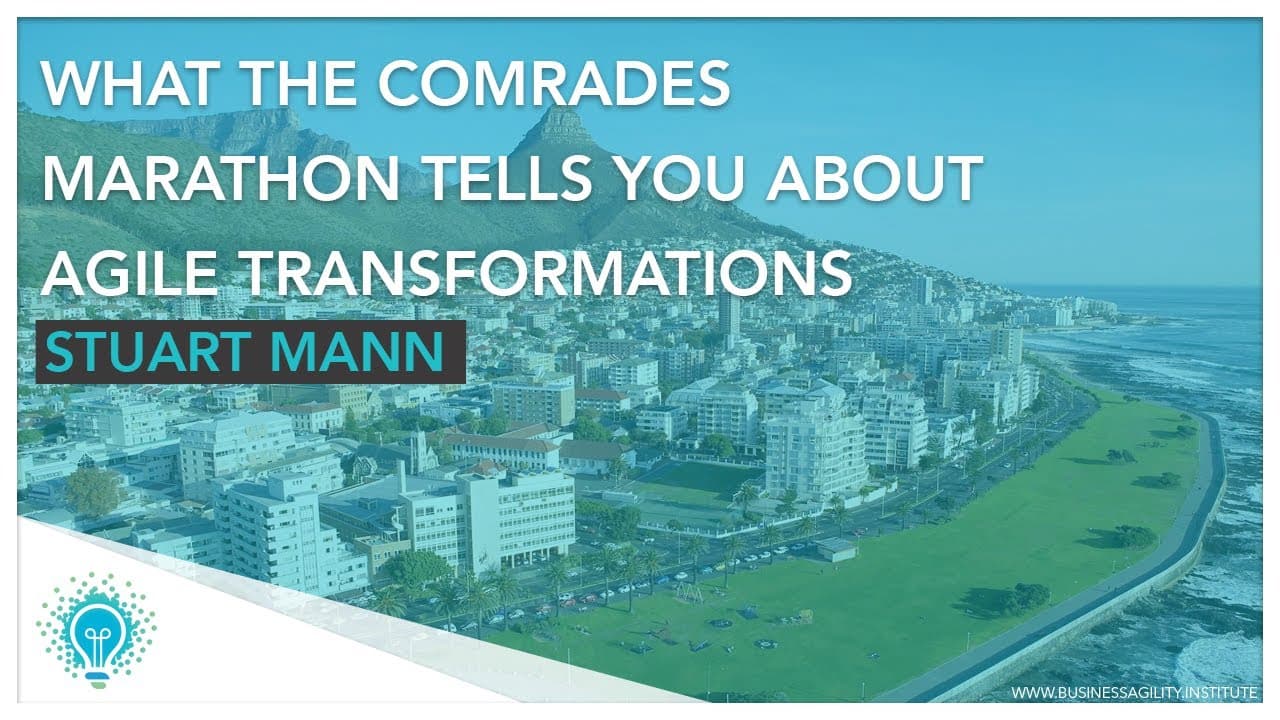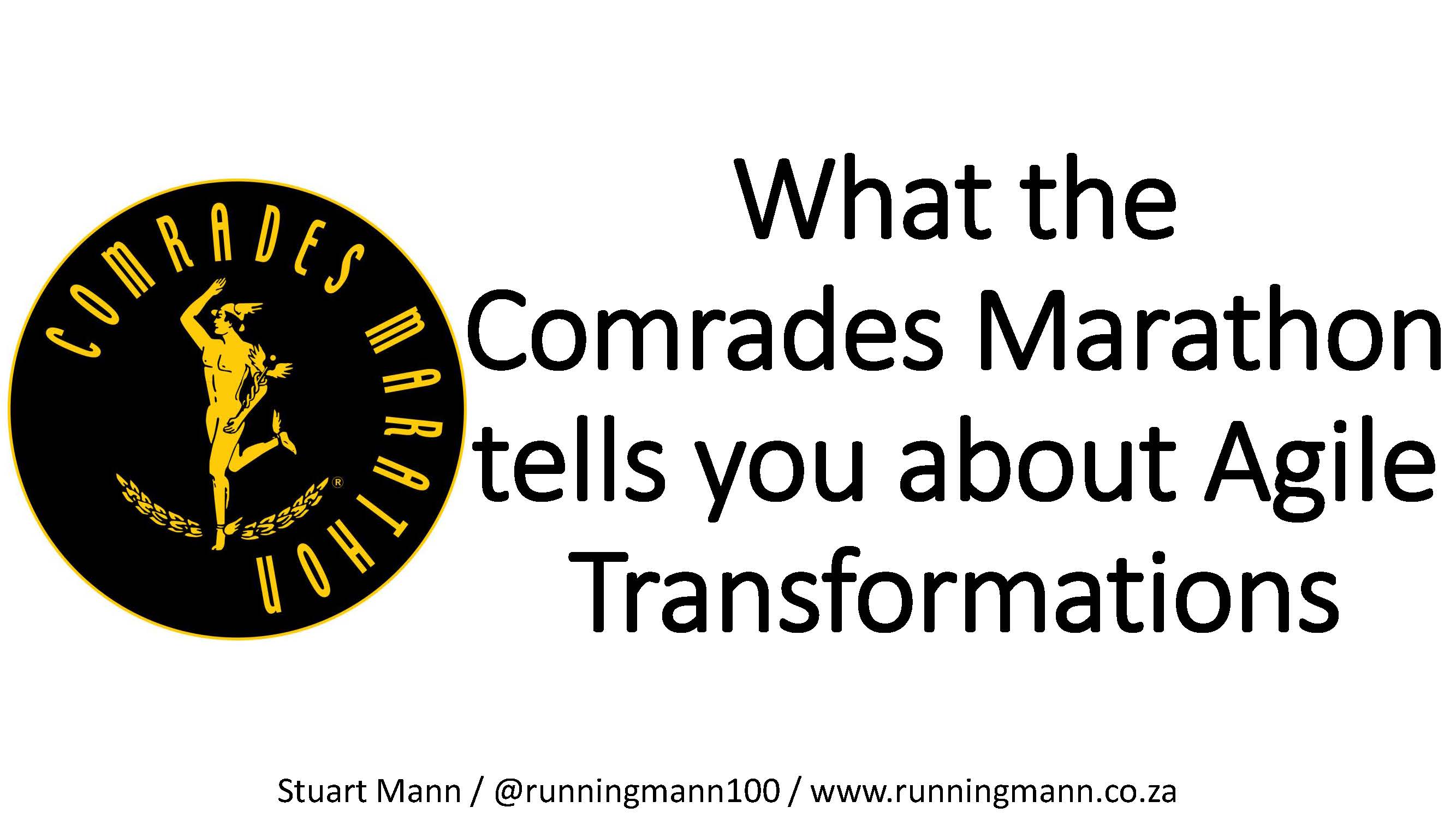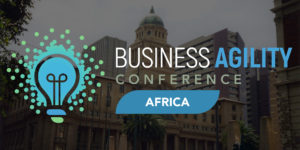Great afternoon, everyone! Thanks for sticking around.
Although the Comrades Marathon needs no introduction for the South Africans in the audience, we do have a few international guests, so just to cover that: Every year, the Comrades Marathon is a 90-kilometer, very hilly race between Durban and Pietermaritzburg. The direction alternates each year, but there are a lot of hills regardless of which way you go. It started in 1921, founded by a gentleman named Vic Clapham as a way to commemorate the fallen comrades from World War I.
Over the years, it has grown tremendously. This year, they sold 27,500 entries, and they sold out within a week! That just shows how many crazy people are out there in the world. To put things in perspective, last year, there were about 17,000 finishers, with close to 20,000 starters. There are only about eight ultramarathons in the world that have over 1,000 finishers, and five of them are in South Africa. By far, the biggest is the Comrades Marathon, held in the middle of winter. And while it may be the middle of the South African winter, for Comrades participants, it is the longest day of the year—I can tell you that!
Quite simply, it is the oldest, largest, and greatest ultrarunning event on the planet. Myself? Unfortunately, I am a lot less impressive. I'm not the oldest, I'm not the largest, and I’m definitely not the greatest ultrarunner on the planet. However, I am a guy who likes to run marathons—a lot of them. I'm not particularly fast, but that’s where I get my kicks. I’ve done ten Comrades Marathons among the 236 marathons and ultras I’ve completed.
Three Objectives
Today, I have three objectives:
- First, I want to use the Comrades Marathon to kill some misconceptions.
- Second, I want to apply Comrades to the Agile Manifesto.
- Third, I want to prove to you that anyone can run the Comrades Marathon.
Killing Misconceptions
Misconception #1: It’s All About Sprinting
No, it's not a sprint—it’s a jog. A sprint is a short burst of energy after which you’re doubled over, gasping for breath, and unable to run anymore. That’s not what we want. We want a consistent pace—52 weeks a year. That is the ideal.
In the Comrades Marathon, if you start too fast, you probably won’t finish. The runners leading the race early on, the ones you see on TV in the first 15 kilometers, rarely finish the race. It is very unlikely that the person leading at the halfway mark will win. Many of them don’t even finish.
If you want to do well, it’s about even pacing. To illustrate, here are pictures of the current Comrades champions for both the up and down runs. Let’s focus on the woman on the left, Ann Ashworth, who won the 2018 down run. This graph shows the top ten female runners and their average pace per split. The gold line represents Ashworth. Notice that she didn’t start off the fastest, but she gradually got faster throughout the race.
She was the only one able to do that, and she won. In fact, this pattern is typical. In this year’s men’s race, only two runners achieved a "negative split"—running the second half faster than the first half. They finished in first and second place. You have to go all the way down to the 83rd-place finisher to find another runner who ran a negative split.
The key lesson: If you want optimal performance, whether in running or agility transformations, it’s not about sprinting—it’s about keeping an even pace and managing your energy.
Misconception #2: It’s a Journey, Not a Goal
Yes, there is a journey component, but don’t neglect your goals. Goals help drive the journey. Without goals, you’ll wander aimlessly. Many people watch Comrades on TV, get inspired, and set it as a goal. By the time they reach the start line, they’ve been on a significant journey.
But how do goals affect performance?
This graph tracks the number of runners crossing the finish line in 15-minute intervals. You see "spikes" at specific times—these are medal cutoffs. More runners finish in the last 15 minutes before these cutoffs than at any other time. This pattern shows how people respond to goals.
In 2019, a new 10-hour medal was introduced. The impact was significant. A noticeable number of runners pushed themselves to achieve that goal. I personally ran more of Polly Shorts than ever before just to get that medal!
The takeaway: Setting the right stretch goals can dramatically improve performance. However, unrealistic stretch goals are fairy tales. Get them right, and you’ll see improvement.
Misconception #3: It’s Not How You Start or Finish, It’s the Middle That Matters
Anyone can run the first 30 kilometers. Anyone can run the last 10—because you can see the finish. But the middle? That’s where it gets tough.
At the "just a marathon to go" mark, runners have already covered around 45-48 kilometers. At this stage, no matter how much training you’ve done, you are hurting. Your mind starts playing tricks on you. Most people who drop out of Comrades do so just after the halfway mark.
In business agility transformations, the middle is the hardest part. The start is exciting. The end is in sight. But the middle is where people lose motivation. That’s where your focus should be.
Misconception #4: The Hardest Part is Getting Started
Getting started is hard, but keeping going is harder. That first run? Easy. Keeping it up five or six days a week, when you’re tired, busy, or just presented at a conference? That’s the challenge.
Comrades isn’t a fad diet—it’s a lifestyle change. The same goes for business agility. It requires sustained effort, discipline, and prioritization.
Transformation: Lifestyle Change
On Sunday, I put out a call on social media asking for incredible transformations from Comrades runners. The results were inspiring—people who completely changed their lives.
Their stories differ: training methods, diets, and approaches. But they all had one thing in common—a major lifestyle change. That’s what agility transformation is about.
Applying the Agile Manifesto to Comrades
- Responding to change over following a plan: Plans are great, but you can’t control everything. In 2013, Comrades saw the worst weather conditions in years. Many runners didn’t adjust, and 45% failed to finish.
- Individuals and interactions over processes and tools: Running shoes are great, but all you really need is protection, Vaseline, and determination.
- Customer collaboration over contract negotiation: As a leader, your teams are your customers. Your job is to create an environment for them to succeed.
- Working software over comprehensive documentation: Get out and run. Conferences and books are great, but execution is what matters.
Final Thought: Can Anyone Run Comrades?
Let me leave you with this story. Milani Lavona lost his leg to bone cancer, was once homeless, and struggled with addiction. In 15 hours and 15 minutes, he completed the Comrades Marathon—on crutches.
No matter how hard your business agility journey is, remember this: A one-legged, formerly homeless drug addict was able to complete the Comrades Marathon. Use that as motivation. Pick yourself up and persevere.
Thank you very much.





